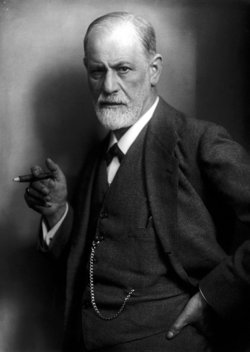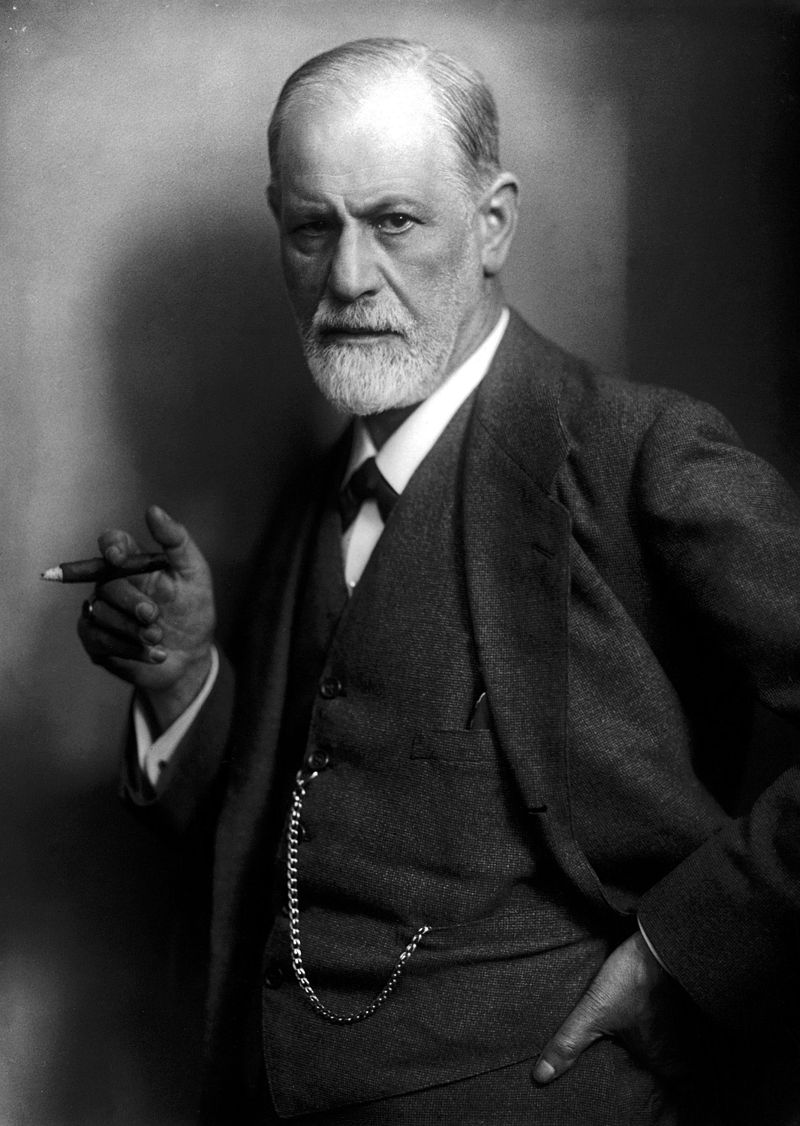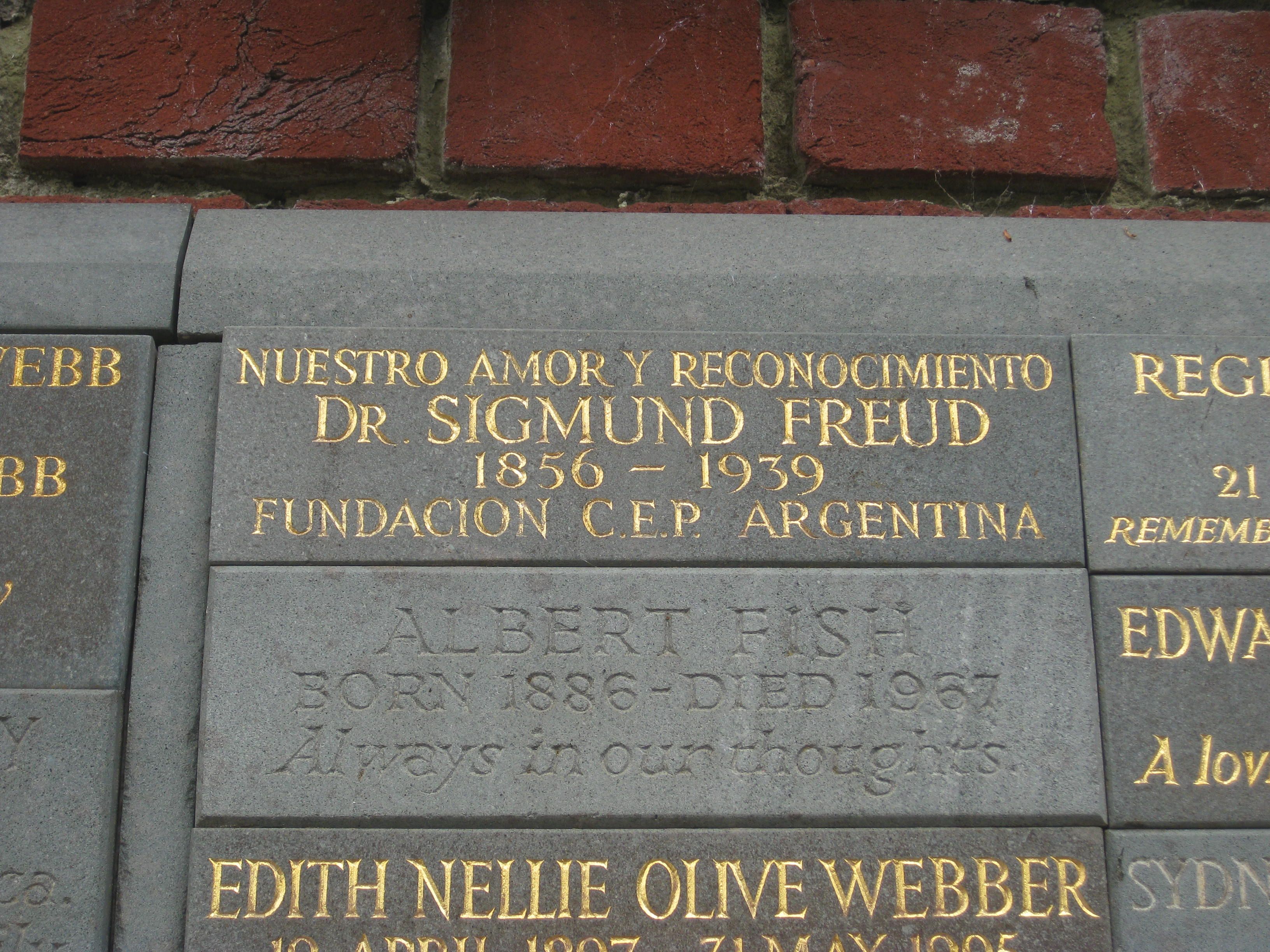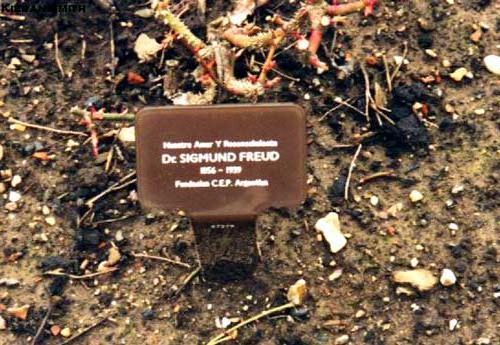Physician, Medical pioneer. He received much international acclaim as a neurologist and neuropathologist and is considered "the Father of Psychoanalysis." While he was a child, his family had a limited income and lived in a crowded apartment, yet they did all they could to nurture his intelligence, which was apparent from a very young age. Their support of his learning and schooling became worthwhile as he was ranked first in his class and, at the age of seventeen, was able to go to the University of Vienna, which he attended from 1873 to 1881. Though there was anti-Semitism in Austria at this time, and it was difficult for Jewish students to be allowed to attend prestigious schools, he was fortunate and received a college education. Since he destroyed his personal papers twice in his life, once in 1885 and again in 1907, little is known about his life in the first years after his graduation. In 1886, he opened a private practice in Vienna, specializing in brain and nervous disorders. Though he is primarily remembered as a psychiatrist, his original focus was neurology, and he was one of the earliest researchers of cerebral palsy, which was known as "cerebral paralysis" at the time. Freud was studying the disease long before most researchers had begun to take notice of it and went against the findings of Dr. William Little, the physician who had first identified cerebral palsy. According to Little, it was caused by a lack of oxygen during birth, but Freud believed that perinatal complications were only a symptom. Freud's findings were eventually confirmed during the 1980s. During this time, he also experimented with hypnosis on his most serious cases but found that he got better results when he put his patients on a couch and encouraged them to tell him whatever was on their minds, a technique that would come to be known as free association. Another important aspect of his work during this time was his belief that cocaine was a good antidepressant, anesthetic, and a cure for nasal reflex neurosis, along with many other disorders. He wrote a paper entitled "On Coca," extolling what he saw as the virtues of cocaine. The paper was very well-received. However, his reputation was later somewhat tarnished by this enthusiasm when many reports of cocaine addiction and overdose began surfacing all over the world. In addition to exploring the subconscious minds of his patients, Freud also began to explore his own subconscious mind. He suffered from a number of psychosomatic disorders and phobias and began to analyze his dreams, memories, and personality development. As he was conducting this self-analysis, he realized that he had a great deal of anger and hostility towards his father and that he had sexual feelings for his mother. These realizations formed the basis of his theories on psychosexual development, most notably the Oedipus Complex. In 1900 and 1901, he published a few books on the unconscious mind, though they did not sell very well. His fortune began to improve not long afterward, however, when he was given a professorship at the University of Vienna. Though many people began paying attention to his theories and became loyal followers, not everyone agreed with his teachings, and he tried to expel those colleagues who disagreed with his findings or with certain aspects of them. In addition to his theory of psychosexual development and his groundbreaking research on cerebral palsy and psychoanalysis, other important aspects of his work include his theories of defense mechanisms such as denial, displacement, sublimation, and projection; life and death instincts; totemism; and his belief that the psyche was divided into three parts, the id, the ego, and the superego. After the Nazi Anschluss of Austria in March of 1938, Freud, his wife Martha Bernays, and their six children escaped from Austria with the financial help of Princess Marie Bonaparte, a friend and patient of his. Before leaving, however, Freud was made to sign a statement that said the Nazis had treated him respectfully. In June, they were allowed to enter France, and soon after, they made their way to London. He died in September of 1939 of cancer of the mouth, which he had contracted in 1923 due to his lifelong addiction to cigar smoking. Though he had had his jawbone removed and had undergone more than thirty operations, he continued to smoke and finally could no longer endure the pain of his cancer. At this point, his private physician came to his London home and gave him a morphine overdose.
Physician, Medical pioneer. He received much international acclaim as a neurologist and neuropathologist and is considered "the Father of Psychoanalysis." While he was a child, his family had a limited income and lived in a crowded apartment, yet they did all they could to nurture his intelligence, which was apparent from a very young age. Their support of his learning and schooling became worthwhile as he was ranked first in his class and, at the age of seventeen, was able to go to the University of Vienna, which he attended from 1873 to 1881. Though there was anti-Semitism in Austria at this time, and it was difficult for Jewish students to be allowed to attend prestigious schools, he was fortunate and received a college education. Since he destroyed his personal papers twice in his life, once in 1885 and again in 1907, little is known about his life in the first years after his graduation. In 1886, he opened a private practice in Vienna, specializing in brain and nervous disorders. Though he is primarily remembered as a psychiatrist, his original focus was neurology, and he was one of the earliest researchers of cerebral palsy, which was known as "cerebral paralysis" at the time. Freud was studying the disease long before most researchers had begun to take notice of it and went against the findings of Dr. William Little, the physician who had first identified cerebral palsy. According to Little, it was caused by a lack of oxygen during birth, but Freud believed that perinatal complications were only a symptom. Freud's findings were eventually confirmed during the 1980s. During this time, he also experimented with hypnosis on his most serious cases but found that he got better results when he put his patients on a couch and encouraged them to tell him whatever was on their minds, a technique that would come to be known as free association. Another important aspect of his work during this time was his belief that cocaine was a good antidepressant, anesthetic, and a cure for nasal reflex neurosis, along with many other disorders. He wrote a paper entitled "On Coca," extolling what he saw as the virtues of cocaine. The paper was very well-received. However, his reputation was later somewhat tarnished by this enthusiasm when many reports of cocaine addiction and overdose began surfacing all over the world. In addition to exploring the subconscious minds of his patients, Freud also began to explore his own subconscious mind. He suffered from a number of psychosomatic disorders and phobias and began to analyze his dreams, memories, and personality development. As he was conducting this self-analysis, he realized that he had a great deal of anger and hostility towards his father and that he had sexual feelings for his mother. These realizations formed the basis of his theories on psychosexual development, most notably the Oedipus Complex. In 1900 and 1901, he published a few books on the unconscious mind, though they did not sell very well. His fortune began to improve not long afterward, however, when he was given a professorship at the University of Vienna. Though many people began paying attention to his theories and became loyal followers, not everyone agreed with his teachings, and he tried to expel those colleagues who disagreed with his findings or with certain aspects of them. In addition to his theory of psychosexual development and his groundbreaking research on cerebral palsy and psychoanalysis, other important aspects of his work include his theories of defense mechanisms such as denial, displacement, sublimation, and projection; life and death instincts; totemism; and his belief that the psyche was divided into three parts, the id, the ego, and the superego. After the Nazi Anschluss of Austria in March of 1938, Freud, his wife Martha Bernays, and their six children escaped from Austria with the financial help of Princess Marie Bonaparte, a friend and patient of his. Before leaving, however, Freud was made to sign a statement that said the Nazis had treated him respectfully. In June, they were allowed to enter France, and soon after, they made their way to London. He died in September of 1939 of cancer of the mouth, which he had contracted in 1923 due to his lifelong addiction to cigar smoking. Though he had had his jawbone removed and had undergone more than thirty operations, he continued to smoke and finally could no longer endure the pain of his cancer. At this point, his private physician came to his London home and gave him a morphine overdose.
Bio by: Carrie-Anne
Family Members
Advertisement
See more Freud memorials in:
Explore more
Sponsored by Ancestry
Advertisement























